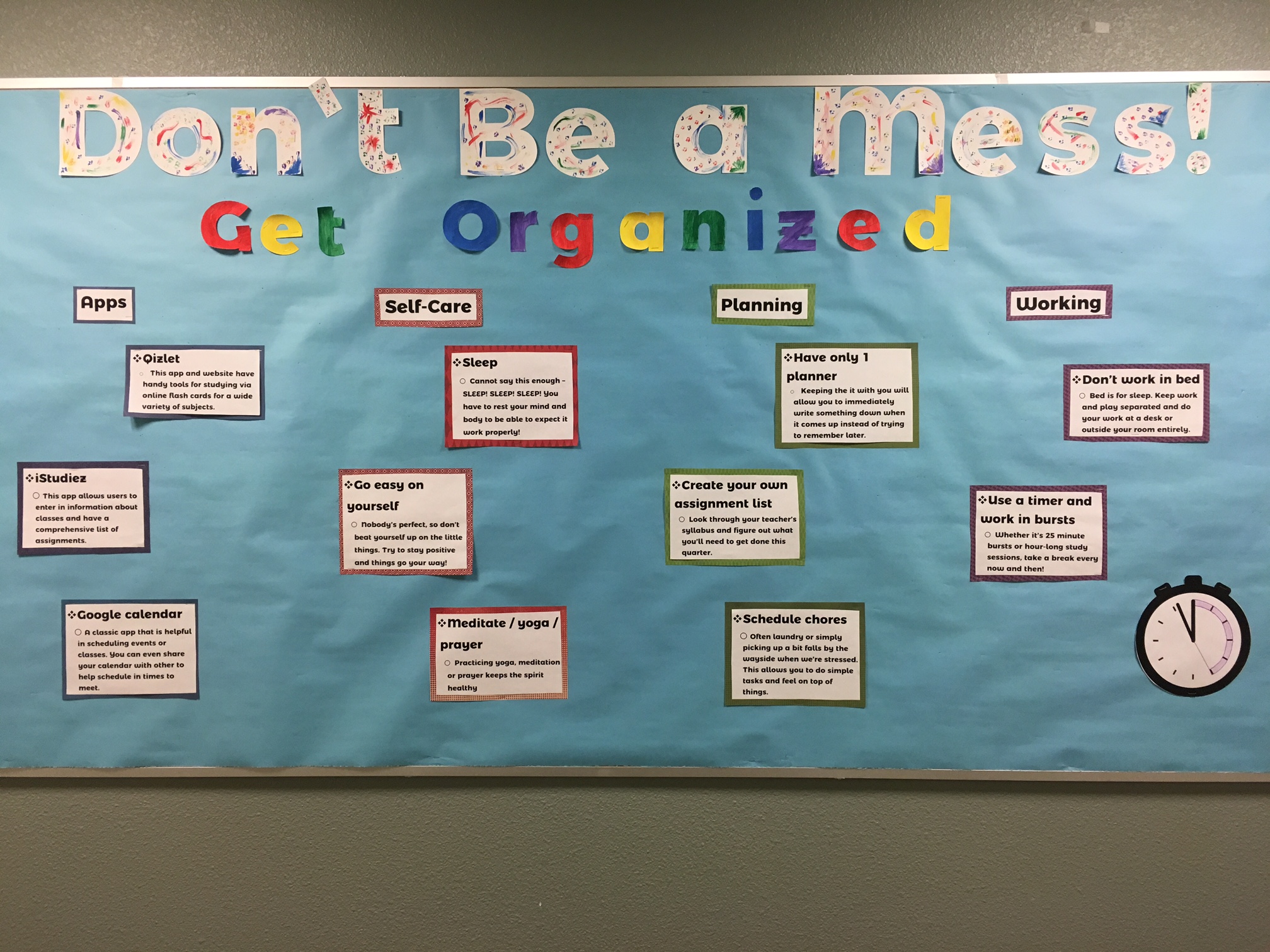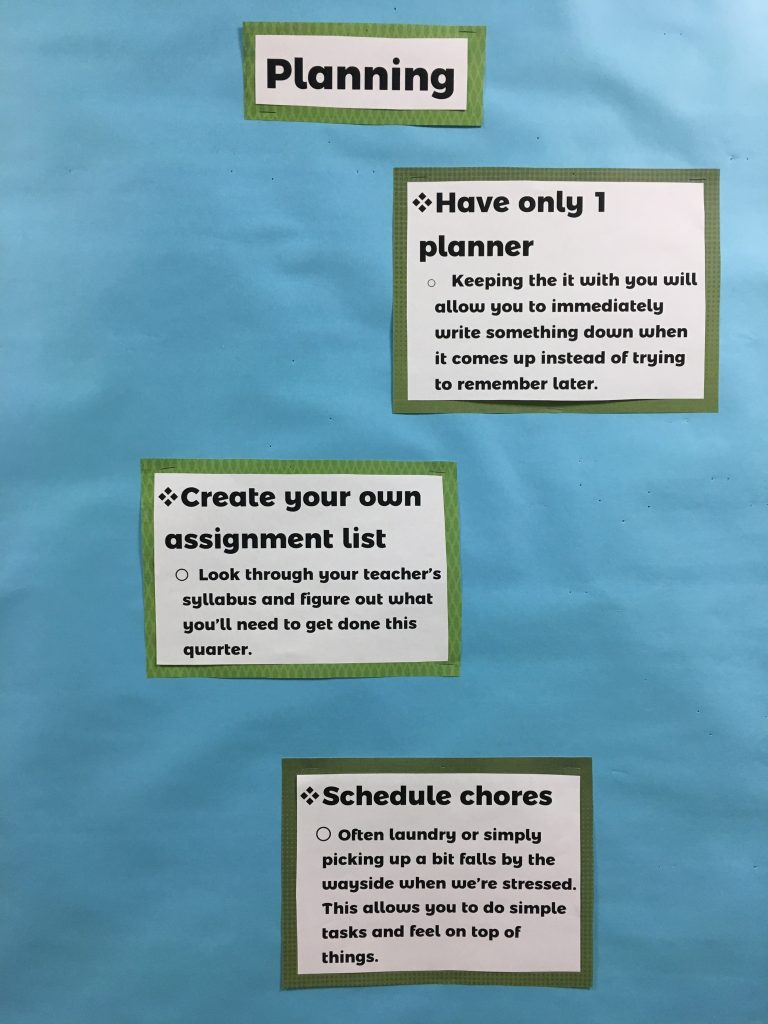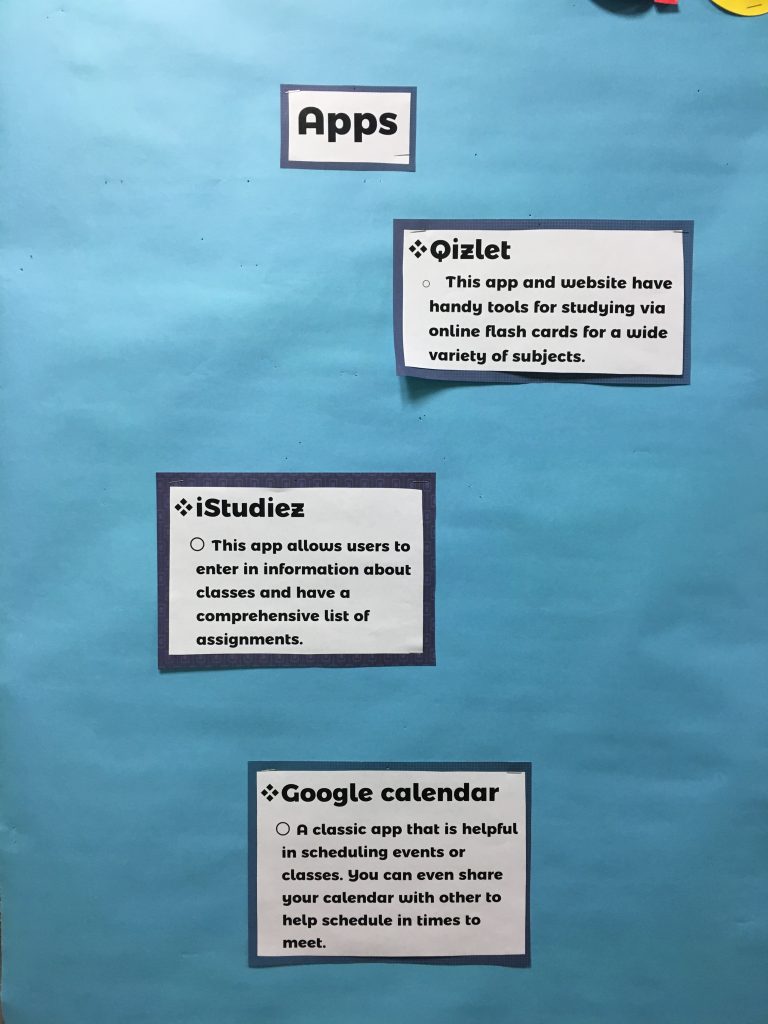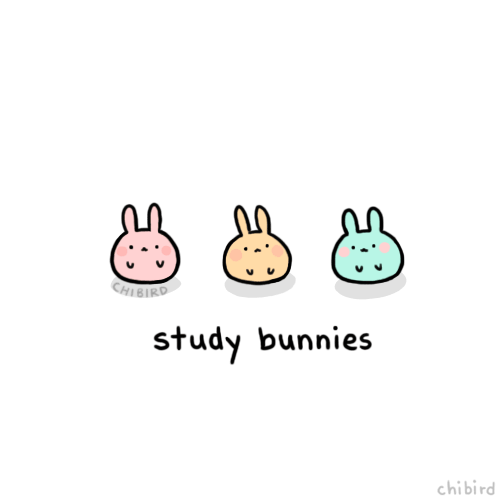“Don’t Be a Mess!” Well, okay I’ll try.
Taking a break from making Easter Egg door decorations, I wandered around the wings of Graham Hall at 12AM. Besides finding the layouts of A and B wings strange and foreign, I saw this bulletin board that reminded me of this class.

Initially looking at the title, I was a little confused and slightly shocked at the intensity of such a statement “Don’t Be a Mess!”. Yet, the subtitle gives more clarification and viewing the bulletin board closer provides further information on how to achieve organization academically and personally.

As someone obsessed with organization and planning, seeing this section of the board made me excited since I live by all the ideas listed. Such mentality behind planning is similar to that behind writing and English in general. Thinking more about these tools, I realized it reminded me specifically of the readings such as “BEAM” and “The Role of Inquiry” and the skills necessary to succeed in writing and reading. Both the advice and the articles relate to how to do something common like writing in a systematic and concise way.
Relating to the Readings
In “BEAM” by Joseph Bizup, the author mainly focuses on the BEAM method, which stands for “background, exhibits, arguments, and methods” (p. 75). Bizup explains this procedure in the case of researching, yet a similar technique can be used towards writing in general. For example, this blog post can be created using a BEAM-like method when I look for sources to backup my thoughts, format my argument clearly with those sources and write in certain styles to drive my point home. On the other hand, the bulletin board uses this same systematic thinking towards studying and learning. This type of thinking is key for succeeding in writing and allows the writer to remain focused and organized when creating an argument.
Stuart Greene writes “Argument as Conversation: The Role of Inquiry in Writing a Researched Argument” about approaching research as a conversation in which questions must be asked and answered. He develops this further when he states that “Framing is a metaphor for describing the lens, or perspective, from which writers present their arguments” (p. 150). Greene’s idea of framing links to planning because both allow the individual to present themselves precisely and efficiently. In English, framing helps the writer accurately build their argument to effectively persuade and inform the reader. In life, especially that of a student, planning aids the individual in being thorough as well as being efficient in utilizing her time and efforts.
Holistically, the relationship between brightly-colored board and the readings of CTW is more broad than direct, yet both contain valuable concepts of usefulness of methods and tools.
Connecting to School Overall
Other sections of the bulletin board connect broadly to education and life on campus, such as the Apps highlighted below.

The useful, accessible resources for organization captured in the image may seem like mere applications at first. Thinking more critically, they illustrate what it means to be a good student in all aspects of education. Simple yet valuable, these scheduling tips are concepts that can be applied to not only this Critical Thinking and Writing class but also other classes.
With its quick tips, this Graham bulletin board holds more information than meets the eye and even related directly to my class content!
Happy studying and thanks for reading!

Works Cited
Bizup, Joseph. “BEAM: A Rhetorical Vocabulary for Teaching Research-Based Writing.”Rhetoric Review 27.1 (2008): 72-86. Web.
Greene, Stuart. “Argument as Conversation: The Role of Inquiring in Writing a Researched Argument.” The Subject Is Research. Ed. Wendy Bishop and Pavel Zemliansky. Portsmouth, NH: Boynton/Cook, 2001. 145-64. Print.